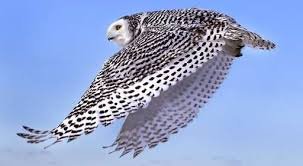Owls are awe-inspiring birds of prey that have learned to adapt to any situation they find themselves in. Tytonidae, which includes barn owls, and Strigidae, which includes all other owls, contain more than 140 different species of owl. They can be found all over the world, with the exception of Antarctica.
Do owls migrate?

Owls, unlike many other birds, tend to stay in the same area year-round. In contrast to songbirds, most owls do not travel long distances in search of food. Some winters, owls find themselves compelled to go further south in search of food. We term it a “irruption” when they all head south at once. Because it doesn’t occur on a yearly basis, this isn’t a true migration. But for owls, which are known for their sedentary lifestyles, it’s a close call. Even the Barred Owl isn’t migratory in some cases. Radio-telemetry studies demonstrate that Barred owls mate for life and rarely leave the six-mile radius they inhabit their entire lifetimes.
A barred owl and great horned owl behavior show that males of both species begin searching for territory in late fall and often find it by December. After finding a place to lay their eggs and a suitable partner, they do so at the end of the month. During the months of January and February, owls deposit their eggs, ensuring that the young owls will be ready to hatch in the early spring.
Also, know Do owls lay eggs?
Owls hoot to mark their territory, ward off intruders, and communicate with their mates during the mating season, which is why you hear them hooting more in the winter than any other time of year.
Owls are social creatures who live in pairs and share responsibilities. The mother bird sleeps in the nest after laying her eggs as the male looks for food. There are females that can incubate eggs at -35°F. Eggs are just as well-equipped to withstand freezing temperatures and can be left unattended for up to 20 minutes at a period by the mother at temperatures of as low as 25 degrees Fahrenheit.
Is the migration of owls common?

Migration to warmer climates is common among birds, who move large distances each year in search of better food supplies during harsh cold weather. Due to their unique traits, owls do not have to migrate.
Most owl species are known to return year after year to the same location and even utilize the same nest.
These owls don’t have a natural tendency to migrate to new areas; in fact, they don’t even follow a consistent annual migratory pattern. As a result, in order to find food, these birds are forced to migrate south of their normal range.
Even so, because owls prefer to remain in a small area and don’t migrate frequently, this is considered a migration for them.
Do Owls Hibernate In Winter?

Silently cruising through the forest in the dead of winter, listening for any sounds of footfall in the snow. Owls are able to eat throughout the winter because of their nighttime feeding habits. When it comes to birds, Snowy Owls migrate. As a result, it isn’t necessarily a good idea for everyone in the Arctic to flee their homes as it gets colder there. Instead, there are a variety of approaches to dealing with different types of owls.
Many bird species migrate during their first year of life, and Snowy Owls appear to be no exception. In an irruptive year, this is easy to see, as enormous numbers of them arrive in southern Canada and the northeastern US. The majority of these migrants are young adults.
Do Owls Migrate In Winter?

In cold weather, animals that don’t hibernate usually migrate. Most owls, on the other hand, have developed to be perfectly suited for their environment. There is always food for them if they eat mice and other tiny rodents and birds in colder places. Barn Owls are attracted to farmsteads because of the abundance of rodents that can be found year-round in barns and farms (something the farmers actively encourage). The same holds true for forests and prairies. There are owls anywhere there are rats.
Elf Owls, Great Horned Owls, Eastern Screech Owls, and Snowy Owls are just some of the 19 identified owl species in the United States. For the most part, owls are found all throughout the world (with the exception of the extreme poles). The lack of food does not necessitate a move elsewhere.
Owls that don’t migrate
Some Burrowing owls, for example, migrate from Canada and the Rockies to Texas and Central America during the winter months. Northern Saw-whet owls like the small Northern Saw-whet overlap with their winter range, whereas the Short-eared owl migrates from northern Canada to the central and southern U.S. during the summer.
Summing Up
Some types of owls, although not all, go from one location to another. In times of difficulty finding prey, they seek new locations to eat. Nevertheless, most owl species have developed a strong affinity for the environments in which they live and only travel a short distance to get their prey.





